
For Sergej Jensen’s “first American museum survey,” MoMA PS1 has put on an exhibition of over twenty recent works that Jensen constructed with many types of fabric and colorants, from burlap to cashmere and chlorine bleach to acrylic paint. Most of Jensen’s textiles are found, and his use of them is analogous to his use of found conventions, as he interprets inherited modernist traditions through scavenged fabrics. This acknowledgment of disorder and process renders Jensen’s works moving in their honest exploration of fraying edges and uneven seams.
The 2008 piece Blessed presents this function most directly. Two pieces of cashmere are sewn together and pulled taut, unevenly stretching the warp and weft. At the single horizontal seam, which is neatly stitched, the irregular end of each piece is clearly visible through the thin textile. Fabric edges are usually hidden and tucked away—similar to folding the end of wrapping paper, hemming is a way to disguise the imperfect sides of cut or torn material. But here Jensen displays both realities simultaneously: the polished product and its unrefined components.
Three separate pieces named Untitled—of which there are many—display Jensen’s reinterpretation of the heritage of modernism alluded to in the museum’s description of the show. One piece from 2005, composed of linens sewn together in rectangular shapes, recalls the grid format used by de Stijl or late Bauhaus designers–but Jensen is not as careful with his geometry or materials. His forms are uneven and irregular, with rounded corners and slanting lines. The linen is not bright or clean, but dirty and stained from both the artist’s intervention and each fabric’s natural history, eliding the distinction between intended and unintended creation.
Another Untitled from the same year similarly mimics the emphatic grid of the early 20th century, yet investigates its unsustainability through another method. In this work, an L-shaped swathe of black is composed of four pieces of fabric, as each was not large enough for the artist’s purpose. Unlike paint, fabric’s limits cannot be easily hidden—seams are usually perceptible, no matter how well sewn. A subtle critique of utopia and dogmatic modernism can be read here: while those uniform areas of color looked monadic, they were always built up piecemeal, just like Jensen’s constructed fabric shapes. The difference in this work is that burlap preserves the discrete steps along the way to completion, presenting both product and process.

With Jensen’s most recent Untitled (2011), created at MoMA PS1, he does not recreate a modernist painting in textile, but rather flips one over. The fabric shapes, appliquéd to the base cloth instead of pieced together, are inspired not by de Stijl, but by the scrap pile—many of Jensen’s pieces display the mysterious voids left when something larger and cohesive has been cut out, and when all that remains is the outer template. The entire piece is a symphony in seams, rips, strings, fraying, hacking, and pulling. It’s as if Jensen has turned over a Mondrian to show us the underside, where the threads are hidden, the fabric edges torn, and the seams unraveling.
This perceived critique of modernism is denoted in the introductory exhibition text, which claims, “Jensen gives shape to recent reconsiderations of modernism’s utopias, now tempered by failure and corrupted by tragedy.” Maybe it’s the art historian’s ability to aestheticize anything, but as I walked through the exhibit, I couldn’t discover any indication of failure or tragedy—I found the rips and seams beautiful. Jensen didn’t hesitate to use elegant and precious materials, such as diamond dust and cashmere, just as much as he also used bleach and burlap. Instead of condemning the former, I think he was redeeming the latter—proving how significant and moving every detail can be, whether it’s a wool blanket or a stained old Bundesbank sack (no doubt retrieved off the streets in the artist’s city of Berlin).
This postmodern messiness is what imbues the precise aesthetics of modernism with new interest and life. Jensen’s Scarry Eyes III from 2010 was one piece that stayed in my mind for that very reason. In this work, a large piece of canvas has been cut or ripped horizontally, each break starting about two-thirds of the way up the outer edges and moving inwards about one-third of the fabric’s width. Jensen has “repaired” this separation with large, thick, uneven stitching that resembles nothing so much as an attempt by Dr. Frankenstein. In the center, at the end of each rip, Jensen has pulled the thread so tightly that the canvas puckers, straining to accommodate its mending. This piece could be read as a testimony to the futility of repair and the irreparability of things once done, but even with the warping and dark fabric I was not discouraged by the scars—in fact, I was mesmerized by them. Weeks later, that was the portion of the work that remained in my mind, not the rest of the canvas, straight and taut. Without those rips, it would have been just a piece of fabric.
Sergej Jensen originated at the Aspen Art Museum and is on view at MoMA PS1 until May 2, 2011. Kristen Gaylord is a second-year MA student at the Institute of Fine Arts.

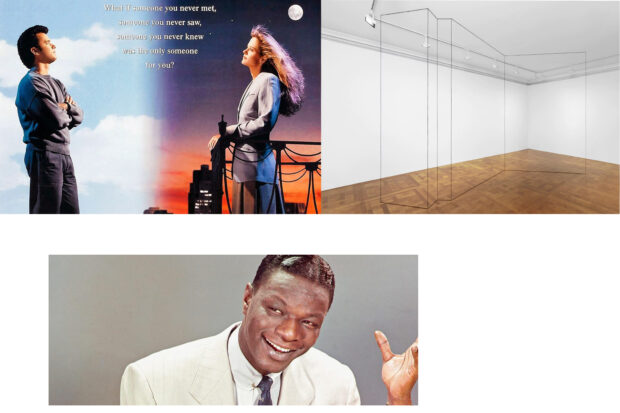
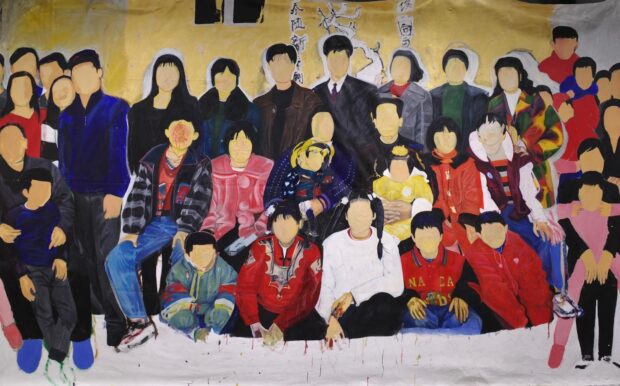
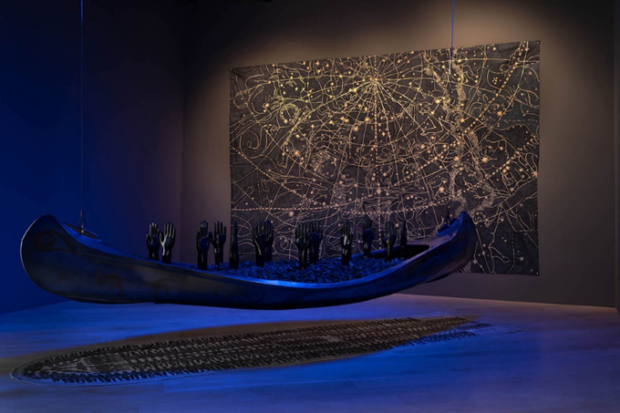
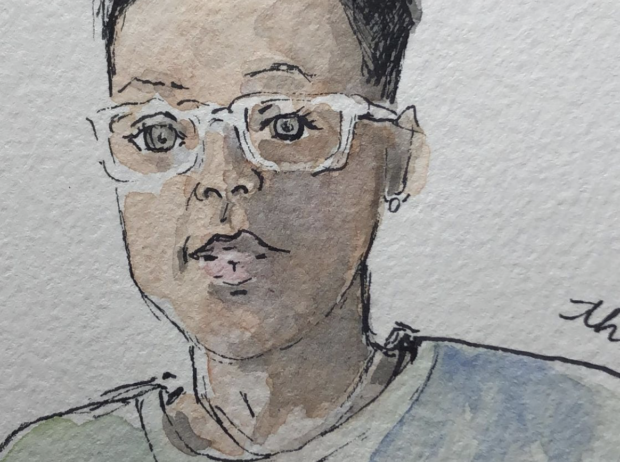
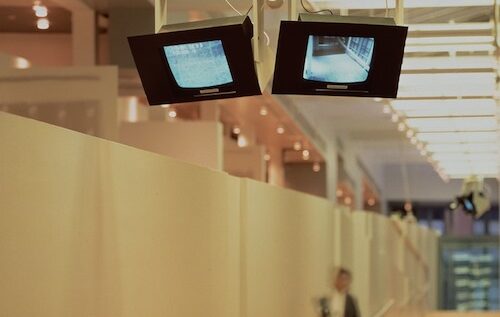
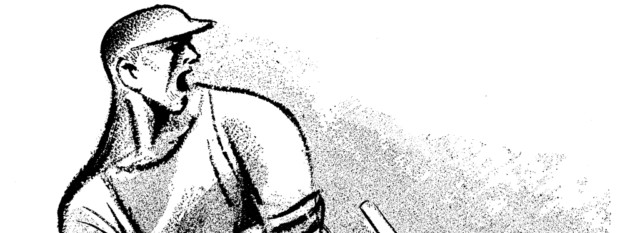
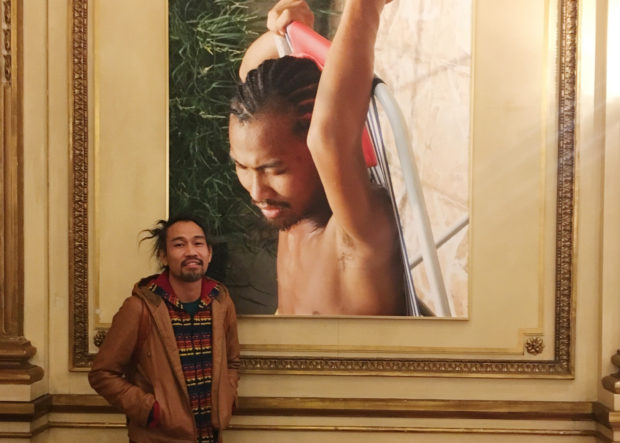
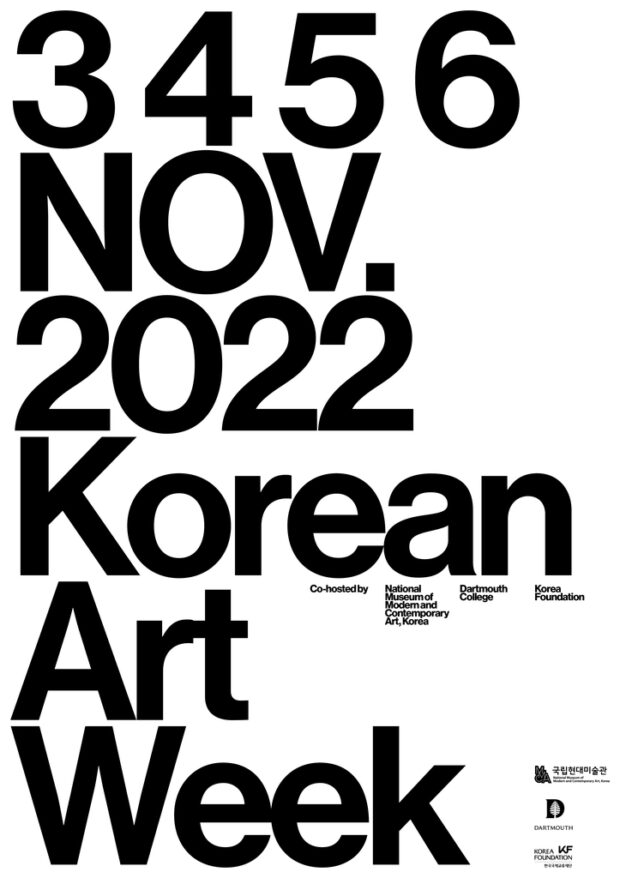

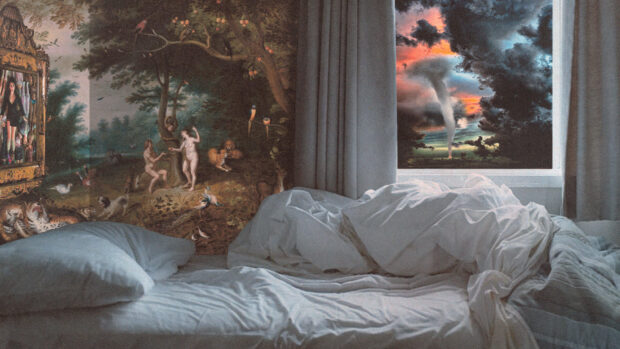
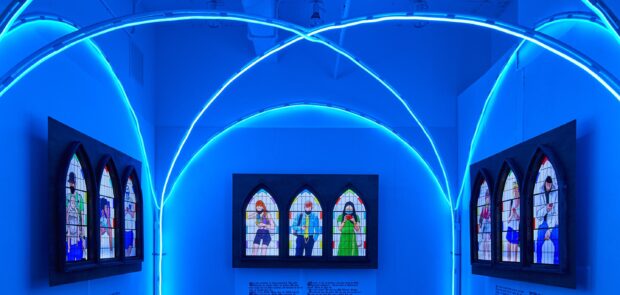
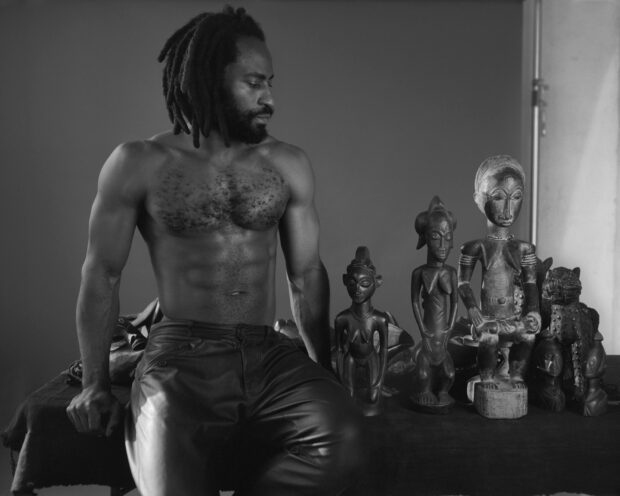
[…] writers who’ve contributed to the inaugural edition of the IFA-CAC blog. Please check out Kristen Gaylord on Sergej Jensen at PS1, Brett Lazer on Robert Venturi and Denise Scott Brown’s Learning from Las Vegas, Bobby […]